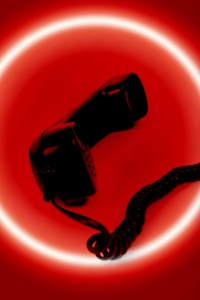 Owens-Illinois, Inc. (O-I) is the largest global glass-packaging company in the world (6). Since it’s founding in 1903, O-I has launched itself into becoming the top resource for some of our most beloved glass-packaging brands (e.g. Anheuser-Busch InBev, Coca-Cola, Heinz, and PepsiCo) (1, 6).
Owens-Illinois, Inc. (O-I) is the largest global glass-packaging company in the world (6). Since it’s founding in 1903, O-I has launched itself into becoming the top resource for some of our most beloved glass-packaging brands (e.g. Anheuser-Busch InBev, Coca-Cola, Heinz, and PepsiCo) (1, 6).
On June 7, 2011, to increase global demands for glass, O-I launched a global marketing campaign, named Glass Is Life™, to spread awareness about the benefits of glass usage in terms of environment sustainability, preservation of quality and taste, and maintaining healthy lifestyles (4). The company initiated a full-scale integrated media campaign. Glass Is Life was strategically launched on to various social media platforms, given its own website, and utilized print and multimedia advertising and marketing.
The Doremus global agency blog stated that the campaign received the 2011 BtoB magazine award for Best Integrated Campaign, and also received an Honorable Mention for its Print Campaign (3). As the company’s first real global advertising and marketing project, it was a very thorough and well thought-out initiative.
O-I was lucky enough to address various issues (thus leading to a wider array of audiences) while implementing this campaign. The goal was to increase worldwide demand for the company’s product, so the campaign capitalized on current worldwide environmental concerns, and in turn, strategized campaign derivatives to potentially drive success rates (4). Glass Is Life focused on topics of environment, health and charisma as the backbone of the campaign (4). Through these outlets, the campaign was able to create tactics on how to draw in audience attention, and motivate them to recognize the matters at stake.
Glass Is Life is largely an advertising and marketing campaign—that of which was made possible because of the sheer revenue, history and size of O-I. That being said, social media did play an impressionable role is this campaign. The campaign itself was created into a freestanding website (apart from the O-I company site), along with a heavy amount of campaign-related social media conversation influx. The home page features multiple sharing links to the various social media platforms; there are also pages called “Sharing Glass” and “Join the Talk” (5). Both pages are dedicated solely to the constant newsfeed of O-I and Glass Is Life-related social media recognitions and impressions.
The “Sharing Glass” page resembles Pinterest in a way, which was interesting. By no means do I think they are taking one networking platform’s design idea and using it as their own—but they chose an intriguing concept that they chose to employ. On the other hand, the “Join the Talk” page is in a league of its own. This page features an almost art-installment type of visual graphic that incorporates slow-moving geometric figures, each filled with a social media post pertaining to the campaign. This captivating graphic essentially draws the eye in. You can hardly avoid at least running the computer mouse over the graphic to witness it constantly transpose. Both of these interactive social media pages were great ways to get the audiences excited to share information on the campaign. Again, it appeals to self-interest. If the reader can see that a post could be highlighted on the campaign website, they might be influenced to create conversations on their networking platforms.
This campaign was well done. There was clear amount of planning executed, and in all honesty, I don’t see much room for viable recommendations. That said, I would like to note that this campaign was launched in 2011. With that, my resources also failed to provide a campaign end date—which in my eyes, means this is a long-lasting campaign that will re-develop and grow with time. Since the O-I is two years “post launch” date, I would suggest arranging a full evaluation report and social media audit to measure success and failure and to re-plan for the next two years. Maintaining presence in a long-term campaign is key, and I have no doubt that Glass Is Life will be able to sustain.
Works Cited/Links:
1. Blakley, J. (2012, Nov. 7). 5 B2B Social Media Case Studies. Posted to: http://www.postano.com/blog/5-b2b-social-media-case-studies
2. Doremus. (2011, June 8). Glass Is Life Campaign for O-I Sends A Clear Message. Posted to: http://blog.doremus.com/blog/2011/6/8/glass-is-life-campaign-for-o-i-sends-a-clear-message.html
3. Doremus. (2011, Nov. 17) O-I Receives Two Honors at BtoB Magazine’s “Best” Awards. Posted to: http://blog.doremus.com/blog/2011/11/17/o-i-receives-two-honors-at-btob-magazines-best-awards.html
4. GLASS: A Clear Solution for the Future. http://glassislife.com/Resources/files/GIL_FACT_SHEET-FINAL.pdf
5. O-I: Glass Is Life. “Sharing Glass” and “Join the Talk.”
http://glassislife.com/sharingglass ; http://glassislife.com/jointhetalk
6. Owens-Illinois, Inc. About O-I: Our Story, Company Facts.
http://www.o-i.com/About-O-I/Our-Story/ ; http://www.o-i.com/About-O-I/Company-Facts/
7. © Onyonet | Dreamstime Stock Photos &Stock Free Images

